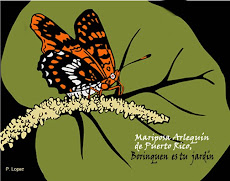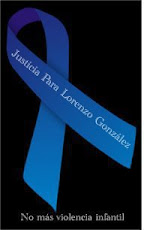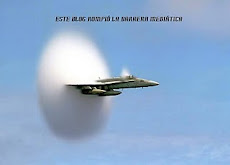American Gunfight is the detailed account of a largely ignored or forgotten episode in United States History: the attack on Blair House-at the time the temporary Presidential residence- by two Puerto Rican Nationalists in November 1, 1950. Although President Truman was unharmed, the assailants killed one police officer, seriously wounded two others and nearly gained entry to where Truman was taking a nap. The authors advance the theory that, all the ideas commonly held about the event--that the motives were absurd, the assailants crazy, the whole event a farce and the President was never in danger—are wrong. They conclude it was only luck and the heroic action of the dying policeman who shot and killed Torresola, what saved Truman. Les Coffelt is the hero, one of the “warriors” to whom they dedicate the book.
The authors state their purpose and the manner in which they have structured the narrative :“This book is about 38. 5 seconds’ worth of gunfight, but to understand why the bullets flew that first day in November 1950, one must understand so much more. The context is tragic, except where it’s merely sad” (p.170). The book is structured into 48, mostly short, fastly moving and generally engrossing chapters. The tragic context, is given all along the book but most dramatically in the three longest chapters: those dedicated to the Nationalist Revolution (3), Griselio Torresola (11) and the history of Puerto Rico under the title of “Borinquen” in chapter 23.
From the very first chapter the context is presented in the figure of Pedro Albizu Campos, “the angry Puerto Rican Nationalist” who would be a more dangerous adversary (than Senator McCarran who at that moment—September 23--was proposing the “red-scare” legislation), for he “would come more directly-he would send men with guns” (p.8). Albizu is described on that same day during the commemoration of the revolution at Lares where he referred to the “infamous act called Law 53 which outlawed the expression of such sentiments in Puerto Rico”. The authors point that this “makes an interesting counterpoint to Truman’s veto message to the Senate and reveal the essence of this other 1950 mano a mano between two strong men, with not the Mall but an ocean and a culture and a history between them”. With this assertion the attitude of respect and understanding that largely prevails in the narrative towards the Nationalists is established. Then excerpts of the speech are given to dramatize Albizu’s denunciation of the Puerto Rican situation: “the assassin is the power of the United States of North America” (p.9) whose very presence is “an act of war”. Then he mentioned “the waste of Puerto Rican manhood in the Korean War, the possibility that germ warfare had been tested on Puerto Ricans, the unfairness of a system that made it necessary for Puerto Ricans to go to the United States to earn a living wage after American capital had wrecked the agricultural economy”. And finally, after two hours Albizu comes to the “immediate political issue, which was the upcoming voter registration” to which he was opposed because the territorial constitution would be influenced by the U.S. And he finished with “All this has to be defied, only as the men of Lares defied despotism- WITH THE REVOLUTION.” (p. 10).
The motives are established in the second chapter titled “Griselio Agonistes” where the Nationalist who killed Coffelt and was mortally shot by the dying policeman, Griselio Torresola is introduced. A largely mysterious figure even to most Puerto Ricans, Griselio is described as “a handsome young man..intelligent, ambitious and committed” but, “more than a handsome fellow, more than an athlete or a worker or a father or a son, he was a man of politics and a man of action”. This was because he was born and raised in the mountain town of Jayuya where his cousin, non other than Blanca Canales (who will lead the revolution in that town) introduced him to Pedro Albizu Campos. “How could Griselio possibly grow up any other than devoted to this man who dazzled them all with this courage, his absolutism, his wit, his powerful oratory, and his way of seeing through things, to the absolute core”. (p. 13) However, this particular day, October 29, 1950, Griselio “seemed distraught”. He had been entrusted by don Pedro himself to “assume leadership of the Movement in the United States” (as stated in the letter found in his pockets). But he had just found out that two days ago the police intercepted two cars driven by Albizu’s bodyguards who were arrested and where weapons were found.
And yet, as much as the authors tried to understand the complexities of the history and politics of the island the book remains but an approximation to the truth in this sense. The situation of Puerto Rico at this moment as a colony of the United States makes it almost impossible to give an impartial analysis of anything pertaining to our history after 1898. Much less anything related to the Nationalist Party and Pedro Albizu Campos. Much less by someone born in the United States with no links to Puerto Rico.
It is similar to the case of Ireland whose history parallels ours in many ways. The Irish rising of 1916 was viewed by the British in exactly the same way as the Nationalist uprising of 1950 (of which the attack to Blair House was a part) by the United States. According to the best story written about the events of that Easter Monday in Dublin, “insane’ was the most popular word to describe both the rising and its leaders”.
The difference is that Ireland got its independence years after the bloody events and those who participated are now revered heroes. In Puerto Rico those who used violence in the same way and for the same purposes, are still referred to as “assassins” (as Collazo and Torresola are in this book) or as lunatics. Neither Albizu nor his followers will be understood until the history of the Irish uprising of 1916 is examined. In the Irish uprising the rebels were regarded as a few hotheads who demanded a Republic without any mandate from the majority of the Irish people; the reaction of the Dublin public was against them and the leaders surrendered with white flags after it was violently put down by the English authorities. It was exactly the same in the Nationalist Uprising of 1950. Even the idea of dying for the country, which Torresola and Collazo obviously had.
It is a well known fact that don Pedro knew Eamon de Valera when the escaped leader visited Harvard after the bloody events. As mentioned in American Gunfight, it was in Harvard that don Pedro converted to Catholicism. But what should be known is that his conversion had to do with the Irish and it was the kind of Catholicism that the Irish leaders embraced and with the same purpose: to use it against the Protestant invaders of his sacred land.
Most reviews have been laudatory, including the Washington Post’s which proclaims it “the definitive history of this attempted murder”. One reviewer considered it a valuable addition to his “anti-terrorist library”.
On the other side of the spectrum, the only Puerto Rican who has reacted so far to the book has described it as an “unreliable version”of the historical event. Pedro Aponte Vázquez, himself an expert on Albizu Campos, has pointed to the fact that the authors have relied on “discredited, unsustainable published accounts”, have not included footnotes or endnotes and insist in referring to Collazo and Torresola as “assassins” instead of as freedom fighters, which they were. I totally agree.
En conclusión, en este aniversario número 57 del ataque a Blair House, todavía no se ha escrito una historia que ayude a entender lo ocurrido ese 1 de noviembre de 1950.







































